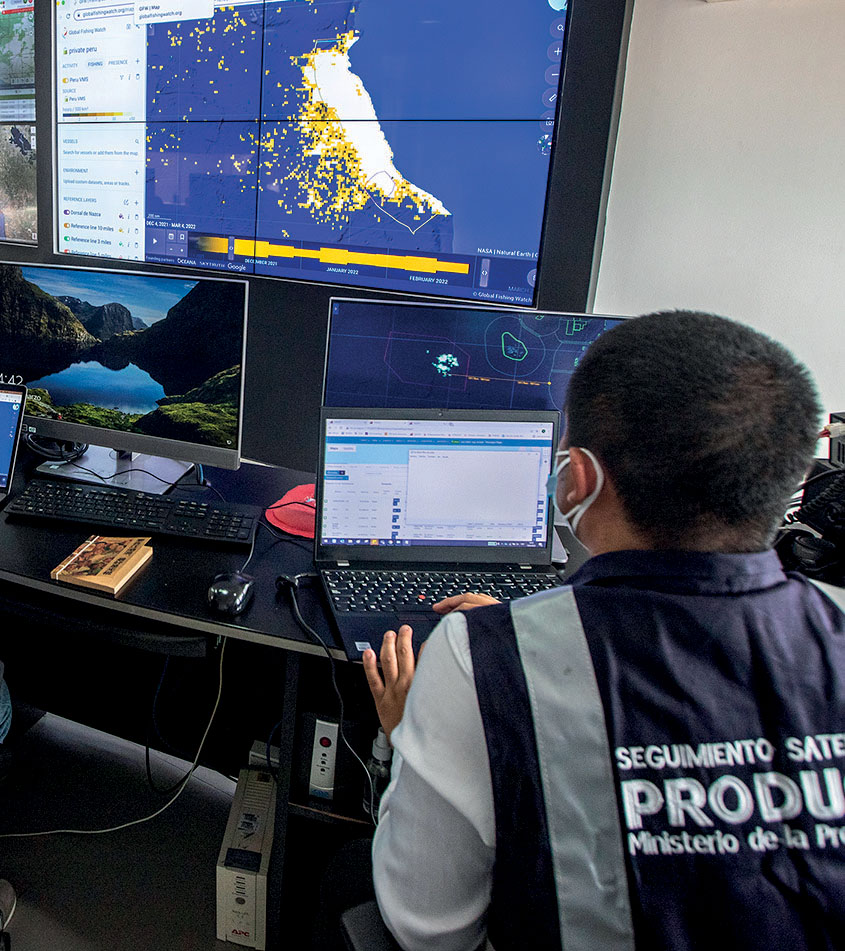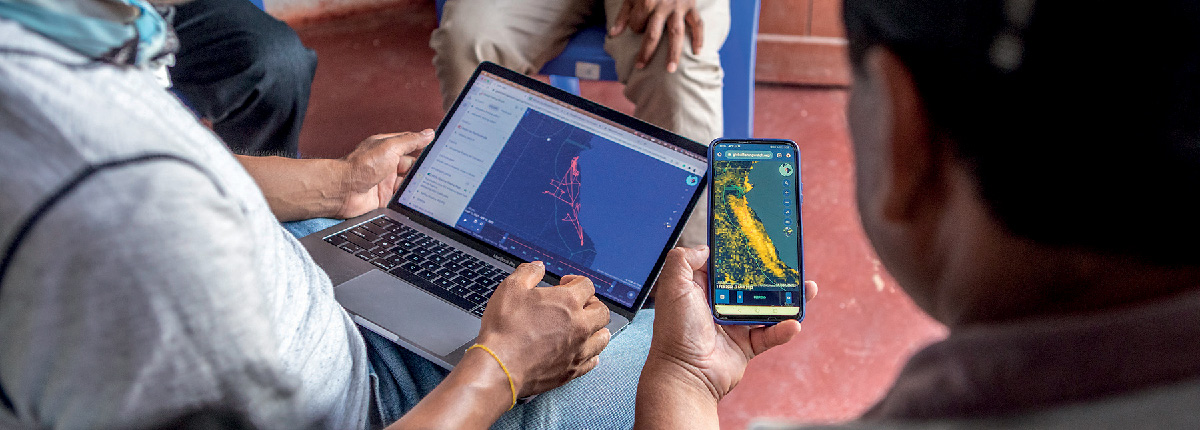Transparency: A Necessary Principle for Greater Ocean Governance
Overview
Today, the health of our ocean is under immense pressure from both intensive human activity and climate change. The United Nations estimates that two-thirds of the marine environment has been significantly altered by human actions, particularly fisheries where a third of the world’s major commercial fish species are overfished.
The ocean remains the least observed part of our planet, making governance of it all the more difficult. Fish stocks straddle jurisdictional boundaries, baseline data on stock health is often inconsistent or not available at all, and vessels can operate out of sight and reach of authorities.
But transparency is offering a new approach to the way the ocean is monitored and ultimately managed. Advances in big data and technology are rapidly transforming our ability to generate new insights, and Global Fishing Watch seeks to make this information readily available to those who need it. When ocean and vessel data are shared openly, we can accelerate science, build accountability and help drive fairer, smarter policies that protect fisheries and those whose livelihoods depend on them.
What is transparency?
The word transparency represents a great many things to those working across the global ocean—from the act of making all data publicly available to the notion that greater visibility of information facilitates more accountability. And while it can be carried out to a range of varying degrees, transparency is earning increased recognition throughout the international community as a progressive way to drive greater ocean governance.
Transparency—the act of making specific ocean and vessel data, as well as the policies and decisions that surround them, both available and accessible to those that need it and are impacted by it—offers governments and other decision makers a scalable and equitable approach to managing our ocean.
From policymakers and fisheries compliance officers to scientists and small-scale fishers, all stakeholders need to have an accurate picture of what is taking place out on the ocean. Greater transparency of human activity at sea will inform dynamic, data-driven decisions and provide a level of accountability that can be monitored.

Transparency in fisheries
Traditional methods of monitoring and surveillance are costly and often inefficient, making illegal, unreported and unregulated fishing a low-risk, high-reward activity for nefarious operators. Transparency offers a new approach to the way fishing activity is monitored, vessel data is shared and information is cross-referenced.
Recent discussions related to fisheries transparency have focused mainly on the publication of vessel tracking data through two different broadcasting systems: automatic identification systems and vessel monitoring systems. But tracking information is just one element needed to inform a transparent approach. Strengthening transparency also means increasing the diversity and amount of fisheries data available—an essential component in developing evidence-based policies that are effective in their governance aims.
Monitoring, control and surveillance can be divided into measures implemented before, during and after a fishing event. These components cannot be carried out in isolation—each form an integral part of a whole that needs to be developed and implemented strategically and also be fit-for-purpose. These regimes must be integrated, comprehensive and seek to provide real-time, accurate and verifiable information in a cost-effective and non-discriminatory manner.
To stop illegal fishing, governments and other decision makers need a comprehensive suite of tools to not only build an accurate picture of human activity at sea but also develop and implement the appropriate policies to govern such activity. This means knowing the identification of a given vessel, what it is authorized to do, where it has been operating and understanding the policies that govern it. By making this data available, we can enable a new era of ocean governance that is powered by international cooperation.

Transparency toward effective marine protection and conservation
Marine spatial planning is essential to the governance of our ocean, aimed at delivering ecological, economic and social benefits through the management of specific marine areas. This can include the designation and implementation of marine protected areas and other effective area-based conservation measures. But effective implementation is often impeded by a lack of timely, accurate and relevant information on the condition of ocean resources, as well as human activities and their impacts.
In recent years, we have seen an exponential increase in the number and variety of ocean observing systems, creating the prospect of a digital ocean ecosystem. This explosion in new data about the ocean, processing techniques and visualization tools are rapidly changing our ability to understand marine ecosystems. The technology revolution presents opportunities to both improve oversight of human activity at sea and maintain better stewardship of ocean resources.

The ocean remains the least observed part of our planet, making governance of it all the more difficult.
A comprehensive process to marine spatial planning relies on transparency whereby information on a fishing vessel’s location, authorization and activities can be combined with environmental and human impacts data to generate insights and actionable information that can be shared with all relevant stakeholders.
Transparency toward a healthy and resilient ocean
The benefits of embracing transparency are clear—data-driven governance is within reach when all relevant stakeholders have the information needed to understand what is taking place at sea. With accessible and reliable data, we can develop insights that ensure meaningful action across each level of management, equipping every fisheries scientist, enforcement agency and policymaker around the world with a powerful new tool to fulfill their important role in safeguarding the global ocean commons.
By publishing policies and data related to human activity taking place out on the ocean, we can enhance ocean health and ensure equitable access to its resources.
